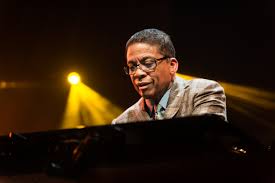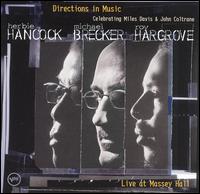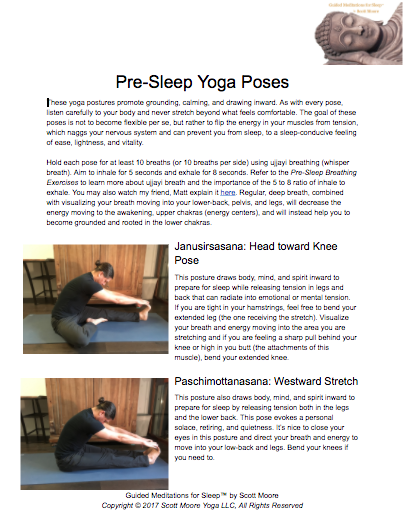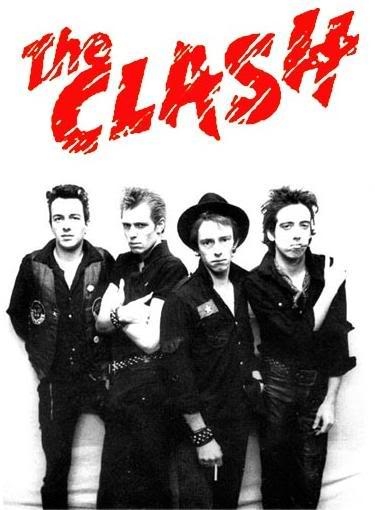Search Other Posts
In 2003, I attended a life-changing concert—Herbie Hancock teamed up with other jazz greats such as Michael Brecker and Roy Hargrove in a quintet to celebrate the music of Miles Davis and John Coltrane, both of whom would have turned a heavenly 77 that year. The two horn players chosen to honor those dead gods of Jazz have themselves now passed on, Brecker in 2007 and Hargrove in 2018, and can count themselves in the numbers of saints who come marching in.
https://www.montreuxjazz.com/herbie-hancock
Whether yoga asana or jazz, both modes point to that Oneness of being we all share. Both point to and celebrate spirit. The following is a story about this pointing.
Holy
It was Spiritual. There was a moment in the concert when the horns were off stage allowing the rhythm section to solo. The concert hall was dark except for three dim spotlights, each illuminating a musician on stage. Herbie Hancock was hunched over his keys popping dissonant chords like ice on a red-hot stove. John Patitucci's fingers blurred and tangled as they whirred around the fretboard of his double bass. The drummer was nimbly tap-dancing around his set. Popping, clinking, banging, like someone rummaging through a junk drawer. Then, each musician began to play as if oblivious to the other musicians. All three seemed to abandon the song's underlying structure, the musical map that makes playing together possible. They were alone, lost and consumed in the rite of making their own art. Time began to slip away and it became more of an abstract idea than a perceptible pulse. Impossible to find a down-beat.
The music floated like this for eternally long minutes. I could see the music personified on the furrowed brows and grimaces of the musicians. Their notes were together turbulent, raging, furious, and at times lackadaisical. I drifted with the music. Despite the musical trip, however, something was gnawing at me. It was my rational mind wondering how the music could possibly come back together from this entropy, this chaos. I could see no signs that the musicians were following any sort of map in the song's structure. How would the horns know when to come in and start the melody again, the head? How would the rhythm section come back together? And with these questions, my eyes fixed upon the musicians, hypnotized to the scene before me. Afraid to miss a single note, I stared wide-eyed, wondering what would happen next. Minutes and seconds had ceased.
And after an age, suddenly the horns were back on stage. Without a word, and without a cue, without a gesture, not even a glance, the rhythm section simultaneously aligned to a slow, swung 4/4 meter at the precise fraction of a second that both sax and trumpet blew a soft, low, singular, note. The timbre of this note could not be discerned by the nature of the instruments; it was both sax and trumpet. A third horn. A new name. Invisible but right in front of me. And with this new horn they began the head.
All five were playing as individuals, carving out their own signature and personalities with their instrument. Yet despite the apparent autonomy, chaos, and dissonance, every sound by each musician originated from the same steady beat of one shared heart. It is this heart that makes the maps and this heart that sews the musicians together with an invisible thread. My soul was witnessing a miracle. As I watched and heard them play, I was sensing this shared, invisible heart. I was seeing the finger of God.
So What
Like the music, the concert itself had underlying form and context. It was like a séance, summoning Miles Davis and John Coltrane from the grave back to the terrestrial stage, luring them with their own music. In the spirit of Miles Davis and John Coltrane, Herbie's quintet played the music like Miles and Trane would have played it—decidedly different than Miles and Trane would have played it. Different was the context.
Miles Davis and John Coltrane have always been mysteries to me. Mysteries because the beautiful yet complex music they created during their spin on this globe were only facsimiles of what was written on their souls and in their minds. Each time I listen to a Miles or Coltrane record, I search for clues about what was in their souls. Where was their genius. Their records are only blueprints, but by studying these blueprints, someday I hope to hear what their souls were calling out to the world—to me. For now, though, I am a young student to the world of jazz and only have ideas of what these geniuses were singing. Most of it remains a mystery to me.
I WILL BE YOUR LIGHT IN THE WILDERNESS
To miss the Herbie Hancock Quintet, billed as Utah's hottest jazz event of the year, was almost reason enough to pass up the invitation to go and teach English in Korea for a year. I went to Korea. I arrived as winter was setting in and after a few long, cold months in this new and foreign world of Korea, I finally got a weekend off. While on a bumpy train headed south to sunnier Busan, I happened to notice an ad hidden in the corner of an English newspaper. It announced that in two weeks, the Herbie Hancock quintet would be in Seoul performing the same concert I had missed in Utah. I almost jumped out of my seat with surprise and joy. The Universe likes to spoil me from time to time.
Providence may have brought Herbie Hancock to Korea but I still had my work cut out for me if I wanted to go to the concert. First I had to get a ticket. This was before buying your ticket on the internet was really a thing. My Korean pair-teacher, Eun-hee, my tag-team partner in the MMA ring of teaching children, made several necessary phone calls to Seoul and spent a lot of time helping me secure a ticket. She even paid for my ticket using her own bank account to wire the money. I paid her back in cash. Without a Korean speaker, getting a ticket would have been nearly impossible.
Even after the arduous task of procuring a ticket, it took several days and much drama, to cover my classes. The decision to allow me to go and ask other teachers to take my classes went all the way to the director of our school. Despite the fact that I already had my ticket, ultimately going to see Herbie Hancock was in his hands. He was concerned about the school's constant shortage of native English-speaking teachers. After several days of deliberation he finally he acquiesced and allowed me to go.
PILGRAMAGE
With a ticket waiting for me in Seoul, I taxied to Yousong, a part of town in Daejeon where I was living, and bought my bus ticket to Seoul. While waiting for the bus to leave, I found a bakery. There was nothing good, so instead I went outside and sat on the edge of a shadow in the hopes of catching the last rays of a tepid sun. I faced the sun, closed my eyes and let it penetrate my closed eyelids. I drank it.
During my two and a half hour ride to Seoul I read Dostoevsky's words of devils and angels, saints and sinners, of children. I read of Devils becoming angles. It reminded me that the Universe is mostly good with some interesting variations of good that some call “bad” thrown into the mix.
With only a small day pack stuffed with Karamazov, a subway guide, and my toothbrush, I arrived in Seoul and then hopped onto the subway to make my way to the stop nearest Kung Hee University, the concert venue. As I stepped from the subway station, the winter afternoon met me with a bitter chill. It was cold and sunny, bright and sharp. The oblique rays of the afternoon sun did little to chase away the goose bumps on my skin.
I walked around busy Seoul streets for a while following signs to Kung-hee University. After asking several times for directions I finally arrived at the university. After several more requests for directions to the concert hall, I finally found my the long awaited destination of my pilgrimage. As I walked up a hill I saw the concert hall standing before me like a giant. It was designed after a renaissance cathedral. It looked like Westminster Abbey to me.
It had stained glass windows and large, ornate doors, arched ceilings, etc. Its two towers reached high into the deep blue sky like arms to heaven.
Considering all my trouble of getting the ticket, I couldn't shake the pessimistic feeling that somehow, something would prevent me from going to the concert. I had to get my ticket in my hand before I'd believe I was going to see Herbie Hancock in concert. Entering the giant front doors, my lone footsteps echoed off the marble floors as I walked in search of someone who could give me my ticket. A nice woman told me in broken English that they would not being to issue tickets until six. It was only four thirty. Okay, maybe I was a little paranoid. But before leaving to look for a motel room for the night, I decided to look inside the enormous hall to see what it looked like.
Inside I saw a man on the stage warming up on a stand-up bass. Someone in a sound booth above my head shouted to the bassist to plink and on the piano a bit to get a reading. To my complete amazement, Herbie Hancock, having been summoned by his own instrument, walks onto the stage carrying a folder with his music. He was impossible to mistake; impeccably dressed: hip, thick rimmed glasses, a dark suit over a deep purple shirt, and a monotone tie —stylish, modern, but not loud. Herbie replaced the bassist on the piano. I was sitting in the front row of the hall, only fifteen feet from Herbie Hancock! Then it dawned on me that I was about to get a personal, pre-concert concert.
The bass player/part-time piano plinker turned out to be John Patitucci, a highly acclaimed bass player and bandleader billed for this tour. I was surprised at the obsequious deference he gave Herbie. After all, he's no rookie. Moreover, he'd been touring with Herbie for more than a year, and after a year of playing with someone, I assumed that they'd be chummy. Perhaps the marking of a true student is one who recognizes the master.
https://www.celebrity-direct.com/hire-jazz-musicians-classic-broadway-singers/hire-herbie-hancock/
Then the sound check began. Herbie and John pulled out the sheet music that Herbie toted onto the stage and together they penciled in some changes, analyzing the music meticulously, note by note, measure by measure. Later in the performance, when they came to that reworked spot, I'd never have guessed that they hadn't been born playing it perfectly.
Soon, Michael Brecker—rigid, tall, quiet— walked onto the stage, saxophone in hand. He stood listening to the rhythm section and would often play a head or a solo to give context to the rhythm sections chords. A few minutes later on swaggered the trumpet player Roy Hargrove. He was as laid back and cool as they come. He sat, so lazily that he almost lay, on a stool a couple paces away from the band. This acted as sort of his ring corner when the rhythm section or Brecker was going at it. He sat listening, lost in his own thoughts, and raised his trumpet to play when the music called for it.
Once during the sound check, the rhythm section was plowing through some chords and Roy Hargrove pulled up his horn and played a line. To me it sounded like any regular jazz line but Michael Brecker broke his frozen stance and burst out with a guffaw, looked over to Roy Hargrove, and shouted, "Good one!" Roy was telling jokes on his trumpet. I wished I understood the punch line—musically esoteric. A few minutes later, still in a joking mood, Roy Hargrove began a solo, this time using the melody to Kenny Rogers's country hit, The Gambler.
During the sound check, I had the rare chance to witness not only these musicians' music, but more importantly I got to see their personalities, raw and exposed in a way that is impossible in front of a crowded concert hall. Herbie was funky, funky, funky, like an old southern woman cooking fried chicken on the porch. Herbie had wonderful blues face: a painfully blissful grimace evoked by the music.
Michael Brecker was stiff, reserved, tall, foreboding, and looming. I could sense that he has secrets going on behind his quiet eyes. By this time, he was experiencing the deleterious effects of Leukemia.
Roy Hargrove was there to play. He's got secrets, too but he's so hip, he knows that even he doesn't even understand them.
John Patitucci has a happy, kind face. His defining characteristic is his virtuosity on his bass. Still, he isn't trying to prove anything. He just does it and does it damn well.
https://www.express.co.uk/entertainment/films/802783/Willy-Wonka-Gene-Wilder-Charlie-Golden-Ticket-Chocolate-Factory
The drummer (I forget his name) was a great drummer—a furry but never over bearing. He knew his place. He was actually a replacement for Brian Blade, the regular drummer who couldn't finish the tour.
I also had the chance to see them carve into and analyze the music, measure-by-measure, analyzing chords, rhythms and harmonics. They talked about the music as if they were seeing it for the first time. Everyone offered suggestions and they penciled them in.
After two hours of this pre-concert concert, the ushers shoed me out. By now it was late enough that I was able to get my ticket from the ticket office, which I stashed safely away in my wallet. I felt like I was Charlie Bucket finding a golden ticket.
The concert still didn't start for an hour and I hadn't found a motel room for the night. It was dark outside as I left the concert hall. The cold blew through my canvas coat unmercifully. Walking down the busy streets near the university, it didn't take long to see that the neighborhood of Seoul I was in was more suited to a nightclub a nice, clean motel. As I began to walk, I realized that I hadn't eaten since breakfast and instead of worrying about a motel, I concentrated on getting something to eat. I decided on pizza. Unfortunately, it was only a take out restaurant, so I took my pizza next door to Baskin Robins and ate it sitting at a one-person table. I wasn't in the mood for ice cream but I needed to rent a table so I bought a jr. cup of Chocolate Brownie and watched it melt as I ate my small pizza.
I finished dinner and headed back through the crowded streets to the concert hall. I walked back into the lobby of the concert hall, which was teaming by now with hundreds of people. I saw Herbie Hancock CDs for sale (recorded at an earlier concert) and without hearing a note, I had to have one. I couldn't help myself.
The concert was only minutes away. I entered the hall and easily found my seat in the back of the hall on the ground level. As I sat there, an island in the sea of this great hall, I relaxed and mused on fact that everything had fallen into place. Eventually, the lights dimmed and the band came out onto the stage. The crowd roared with applause. As soon as the lights began to dim, I followed about 50 other cheap ticket buyers, and bolted for an empty seat closer to the stage.
HYMN
The concert was flawless. The musicians' communication must have been very subtle because throughout the entire concert, no one spoke a word, no one nodded or gave any sort of cues, but all five were in sync the entire time, playing exactly at the right time when someone's solo finished, or when there was a segue into another song, or when the timing suddenly changed to something very abstract.
Herbie played elegantly and assertively dissonant. He was Herbie Hancock: funkiness embellishing polished musical prose. Over the almost 6 decades that he's been playing music, Herbie, like Miles and Coltrane, has invented many of the contemporary rules of jazz. Much of the joy of this evening was the rare pleasure of seeing a master of masters at work and watching him have so much fun doing it.
The entire concert had a Herbie flavor. Herbie was the roux in the gumbo, holding it all together.
https://www.rockol.it/testi-di/roy-hargrove
I loved Roy Hargrove's playing. It was heartfelt, cool, and at times manic. He wasn't trying to be a diva. He wasn't trying to be another Miles Davis. Roy was an interpreter, expressing in his own language what he read from blueprints to the soul THE master of jazz. He was Roy Hargrove putting a spin on Miles tunes. The spin was the point. Miles spun.
One my favorite songs of the night was a song that Roy Hargrove wrote, called The Poet. It honors Miles and tells an emotional musical story about Miles' character. When Roy took his solo, I was particularly honed to what Roy was saying with his trumpet. As he played, he told me: if you look in your heart, look deep inside, look way down, keep going deeper, and listen really carefully, amid the discord of life you will find the answer to what you are looking for. You'll find the peaceful and beautiful melody of your deepest inner soul. But be patient and diligent because it will be fleeting; nonetheless, be privy to it. It's there and it's the peace and joy that always resides in you.
https://fanpix.famousfix.com/gallery/michael-brecker
Michael Brecker was the greatest surprise. I had never seen him play and from what I judged of his personality during the sound check, he seemed more like an emotionally repressed corporate lawyer or stockbroker than an expressive sax player. But when he sprang for a solo during the concert, he really sang from his soul; he didn't just play notes. Somehow both his contemplative stage presence and his wildly expressive solos portends his death 4 years later. Michael Brecker died January 13, 2007. The fact that I was able to see this modern sax genius is now invaluable to me.
He really showed his soul and mastery of his instrument during his solo piece, Naima, the infamous and signature Coltrane ballad. At one point during Naima, it sounded like Michael Brecker wasn't even blowing into his horn but rather screaming into it, his eyes squinted shut, his fingers ripping up and down the keys. I was amazed that someone so apparently closed could express so earnestly and honestly.
https://news.jazzline.com/news/airport-tsa-instrument-damage-john-patitucci-bass/
John Patitucci was a storyteller with his music. At the beginning of So What/Impressions, the rest of the band left the stage and gave John 10 minutes alone to tell his story. He sounded and looked like he was praying—pouring his heart out to God as he plucked deep, warm, notes from his strings.
John showed me that music is like a novel or a play—full of wit, rhetoric, surprises, and plot twists. As he was hunched over his bass, his fingers were plucking out his story, and it felt like he was leading us through a gothic castle by the light of a candle, showing the tapestries, the candelabras, the great halls. During his tour, suddenly and without any notice, he jumped hard on a low and inharmonic note. It startled me, like he was throwing open closet door with a skeleton inside. Surprises.
CODA
The band played for two and a half hours and finished with two encores. As the house lights came on people began to shuffle to the doors. I was in awe of what I'd just seen. I was glad I was alone because I didn't want to talk to anyone. I was speechless. I eventually left my seat and entered the already packed lobby. But before going out the door and leaving to find a motel, something inside me said, "Stop. Just be in this moment. Something is going to happen . . . " And there I stood, looking at ornate architecture of the concert hall, my mind poring over the concert and I wondered how I could put it all into words.
I hadn't paused for more than two minutes when my attention focused on a nearby crowd of about 10 people. They were gathering around the stage manager who had just came from back stage. I remembered him from the sound check. I heard the stage manager say to them in English, "I'll ask Herbie if he has time to see you," after which there was brief silence, a quick Korean translation by one better English speakers followed by an outburst of undefiled giddiness. I didn’t know who these giggling girls were but I decided that under no circumstances was I going to not somehow accompany them to see Herbie Hancock. A few minutes later, the stage manager came back and announced to them that they could come back inside the concert hall and after Herbie finished talking to a reporter, they could go backstage and meet them. I simply melted into their numbers as they slipped back through the auditorium doors to wait for the chance to go backstage. They were quite an intimate crowd and it wasn't long before they noticed the stray white guy hanging around. Instead of pushing me away, though, they warmly befriended me.
Apparently, they were part of an organization that is based loosely around Buddhism and celebrates world peace through music. They said that Herbie Hancock and Wayne Shorter (sax player and musical brother of Herbie for many decades) are among the organization's principle and most prestigious members. My new friends admitted that none of them knew Herbie Hancock's music very well. In fact, they admitted that they were only recently trying to learn to appreciate jazz so as to support Herbie Hancock and Wayne Shorter. It was the first jazz concert that any of them had ever been to.
During the 15 minutes that we were waiting for the stage manager to come back, I swapped email addresses with at least five people as others flashed photos of me. I was the exotic stray white guy.
Eventually, the stage manager came back and said that we could go back stage. We rushed down back hallways to a posh and dimly-lighted waiting room. Herbie was standing, talking to a reporter as a photographer busily flashed photos. Roy Hargrove, in his usual stance, half sat, half lay on a low plush chair near the wall. He looked like he'd just hopped out of a hot tub after a hard day's work—spent. His long dreads were covered by an enormous bini and he was wrapped in a gray, wool, New-York-style coat that came to his knees.
My rule against pestering celebrities for autographs was overridden by the magnitude of this moment. Having unwrapped my CD and removed the insert, I timidly approached Roy Hargrove. I couldn't help but sound like an obsequious snail as I peeped out, "Mr. Hargrove, your music was very spiritual to me." He looked at me for a moment and paused, a little surprised by my words. "Thank you," another pause. "Thank you." I could sense that this was the end of our meaningful conversation and so I asked, "Would you please?" as I handed him a pen and the cd insert. He said nothing, only flashed his autograph across my insert. I thanked him and he nodded back in a tired response, only the way a jazz cat can.
I saw the drummer (damn, I wish I remembered his name) lingering about and he politely signed my cd sleeve.
Now Herbie was done talking to the reporter and my newly adopted family, the family of the jazz challenged, was showering him with flowers and gifts and snapping photos. He smiled and happily spoke to us as a group. Even after his long performance, Herbie was amicable and appreciative of our praise. He gladly signed autographs and smiled as he smelled each bouquet that was thrust into his arms. All I could do was stand there as part of the crowd. I wanted to blurt out, like a puberty stricken high school kid, "Herbie! even if these people don't know Hancock from Handel, I know you to be a musical legend and I understand this concert in context of the last 50 years of jazz and modern music. Thank you for this concert. It is a dream come true!" My thoughts must have been printed on my forehead because just as he said he couldn't sign any more autographs, he took my cd sleeve, signed it, and graciously bowed out.
HA! Triumph! I couldn't believe this was happening to me.
Michael Brecker was standing talking to some other stage managers, and understandably loathing us for keeping Herbie, and therefore him, from heading back to the hotel and getting some sleep. His was the only autograph I was missing. I had to do it. So I approached him and told him that I loved his music and that I was a saxophonist as well. I told him he was an inspiration. Without a word, he signed my cd sleeve. Cold. The way he looks. I don't blame him. I'd be annoyed too.
THE LONE AND DREARY WORLD
We watched the band leave and then we followed out the same doors. It had begun to snow. The wind had picked up and it was colder than before. My new friends began to ask me what my plan was for spending the night. I told them about where I planned to search for a motel. They informed me that I probably wouldn't find anything there and that they would take me to a stop on the subway where I could find good, inexpensive lodging.
We hopped on the subway and chatted for the 25 minutes it took us to get to our stop. They walked me to a bright, clean jim jill bong (a 24-hr spa. . . kind of) where for six bucks you can bathe, exercise, watch TV, use the internet, eat, sing karaoke, get electronic chair massages (that was fun) or just lounge and talk to your friends and family. The jim jill bong also had communal sleeping rooms, separated for men and women.
I changed into the issued t-shirt and shorts and then sat on a mat in the corner with my journal and tried to write down as many of my feelings as possible. By now it was about 1 am and the desire for sleep soon clouded my thoughts. I grabbed a foam pillow and took a corner of the sleeping room. Other men's snoring made real sleep impossible, but I was able to take a series of short naps, which helped.
The next day, I caught a train back to Daejeon. During the two-hour train ride home, I stared out the window and thought about my entire miracle of hearing the music, meeting the band, and meeting these new friends.











































